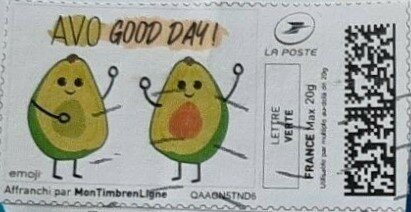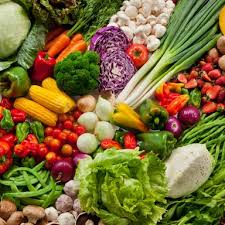Stamp: Avo Good day (Personalized and Private Mail Stamps 2020)
Avo Good day (Personalized and Private Mail Stamps 2020)
01 January (Personalized and Private Mail Stamps ) within release France : TimbrEnLIgne. Emojis goes into circulation Stamp Avo Good day face value 20 Gram
| Stamp Avo Good day in catalogues | |
|---|---|
| Colnect codes: | Col: FR-TIM 2020-432 |
Stamp is square format.
Also in the issue France : TimbrEnLIgne. Emojis:
- Stamp - Yoga Emoji face value 20;
- Stamp - Strong Emoji face value 20;
- Stamp - E-Commerce Emoji face value 20;
- Stamp - Big Glasses Smiley Emoji face value 20;
- Stamp - We love our Clients Emoji. 'On aime nos clients' face value 20;
- Stamp - Persian Cat. Persan face value 20;
- Stamp - Collie. Bouvier Benois face value 20;
- Stamp - Groin Groin face value 20;
- Stamp - You will be Fine. Tu Vas Assurer face value Lettre;
- Stamp - Learn and Grow Up. Apprendre pour Grandir face value Lettre;
- Stamp - Keep Fit Emoji face value None;
- Stamp - Yoga Emoji 2 face value Lettre;
- Stamp - Open Me Quickly. Ouvrez moi vite face value 20;
- Stamp - Tagada face value 250;
- Stamp - Tagada face value 20;
- Stamp - Thanks Merci a vous Top face value 20;
- Stamp - Happy Emoji in Black face value 20;
- Stamp - Ocelot Emoji face value 20;
- Stamp - A bientot Soon face value 20;
- Stamp - Ouaaais face value 20;
- Stamp - Blue and Yellow Thought Bubbles face value 20;
- Stamp - Tap Tap Tap face value 20;
- Stamp - Rabbit Emoji face value 20;
- Stamp - Maple Leaf Emoji face value Lettre;
- Stamp - Hear no evil, see no evil, speak no evil. Three Grey Mice face value 20;
- Stamp - Baaam Emoji face value 20;
- Stamp - Pine Cone Emoji face value 20;
- Stamp - Happiness Emoji face value 20;
- Stamp - 'Go for it'. Tout Schuss Emoji face value 20;
- Stamp - Avo Good day face value 20;
- Stamp - Maple Leaf Emoji in Grey face value 20;
- Stamp - Yess face value 20;
- Stamp - Heart Emoji face value 250;
- Stamp - Tears of Joy Emoji face value 250;
- Stamp - Applause/Clapping Hands Emoji face value 20;
- Stamp - We love our Clients Emoji. 'On aime nos clients' face value 20;
- Stamp - Yesss face value 20;
- Stamp - Whale Emoji face value 20;
- Stamp - Learn and Grow Up. Apprendre pour Grandir in black face value Lettre;
- Stamp - Pine Cone Emoji in black face value 20;
|
Data entry completed
46%
|
|
|---|---|
| Stamp Avo Good day in digits | |
| Country: | Personalized and Private Mail Stamps |
| Date: | 2020-01-01 |
| Emission: | Personalized - Official |
| Format: | Stamp |
| Face Value: | 20 Gram |
Stamp Avo Good day it reflects the thematic directions:
A cartoon is a type of visual art that is typically drawn, frequently animated, in an unrealistic or semi-realistic style. The specific meaning has evolved, but the modern usage usually refers to either: an image or series of images intended for satire, caricature, or humor; or a motion picture that relies on a sequence of illustrations for its animation. Someone who creates cartoons in the first sense is called a cartoonist, and in the second sense they are usually called an animator.
The concept originated in the Middle Ages, and first described a preparatory drawing for a piece of art, such as a painting, fresco, tapestry, or stained glass window. In the 19th century, beginning in Punch magazine in 1843, cartoon came to refer – ironically at first – to humorous artworks in magazines and newspapers. Then it also was used for political cartoons and comic strips. When the medium developed, in the early 20th century, it began to refer to animated films that resembled print cartoons.
In botany, a fruit is the seed-bearing structure in flowering plants (also known as angiosperms) formed from the ovary after flowering. Fruits are the means by which angiosperms disseminate seeds. Edible fruits, in particular, have propagated with the movements of humans and animals in a symbiotic relationship as a means for seed dispersal and nutrition; in fact, humans and many animals have become dependent on fruits as a source of food. Accordingly, fruits account for a substantial fraction of the world's agricultural output, and some (such as the apple and the pomegranate) have acquired extensive cultural and symbolic meanings. In common language usage, "fruit" normally means the fleshy seed-associated structures of a plant that are sweet or sour, and edible in the raw state, such as apples, bananas, grapes, lemons, oranges, and strawberries. On the other hand, in botanical usage, "fruit" includes many structures that are not commonly called "fruits", such as bean pods, corn kernels, tomatoes, and wheat grains. The section of a fungus that produces spores is also called a fruiting body.
Vegetables are parts of plants that are consumed by humans or other animals as food. The original meaning is still commonly used and is applied to plants collectively to refer to all edible plant matter, including the flowers, fruits, stems, leaves, roots, and seeds. An alternative definition of the term is applied somewhat arbitrarily, often by culinary and cultural tradition. It may exclude foods derived from some plants that are fruits, flowers, nuts, and cereal grains, but include savoury fruits such as tomatoes and courgettes, flowers such as broccoli, and seeds such as pulses.



